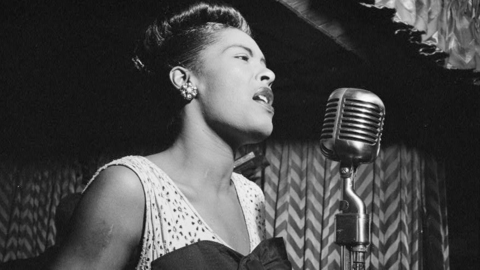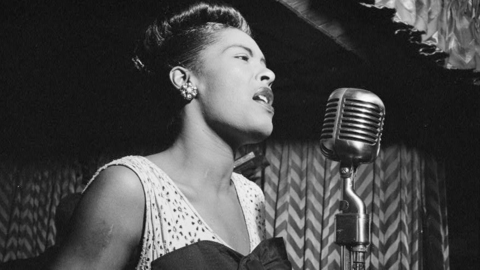

Eleanora Harris, or most known by her artistic name” Billie Holiday”, was a jazz singer and composer. Nicknamed ”Lady Day” by her musical colleague Lester Young, Holiday had a great sway on jazz and pop music. She had a phonic style, mightily inspired by jazz organists, which blazed the trail for a new method of handling phrasing and rhythm.
During the 30’s in Harlem she started giving performances for tips in night clubs galore. Based on rumors, moneyless and facing the possibility of getting kicked out of her house, she sang ”Body and Soul” at a regional club bringing the audience into tears. Afterwards, she started working at different clubs for a few pennies, eventually working at Pod’s and Jerry’s, a famous jazz club in Harlem.
She also worked at a club ” Monette’s ” in 1933. At the age of 18 and after gaining more experience than most adult musicians can claim, Holiday was spotted by John Hammond and cut her first record as part of a studio group led by Benny Goodman, who was then just on the verge of public prominence. In 1935 Holiday’s career got a big push when she recorded four sides that went on to become hits, including “What a Little Moonlight Can Do” and “Miss Brown to You.” This landed her a recording contract of her own, and then, until 1942, she recorded a number of master tracks that would ultimately become an important building block of early American jazz music.
Holiday began working with Lester Young in 1936, who pegged her with her now-famous nickname of “Lady Day.” When buy viagra kuta Holiday joined Count Basie in 1937 and then Artie Shaw in 1938, she became one of the very first black women to work with a white orchestra, an impressive accomplishment of her time.
In the 1930s, when Holiday was working with Columbia Records, she was first introduced to the poem “Strange Fruit,” an emotional piece about the lynching of a black man. Though Columbia would not allow her to record the piece due to subject matter, Holiday went on to record the song with an alternate label, Commodore, and the song eventually became one of Holiday’s classics. It was “Strange Fruit” that eventually prompted Lady Day to continue more of her signature, moving ballads.
Holiday recorded about 100 new recordings on another label, Verve, from 1952 to 1959. Her voice became more rugged and vulnerable on these tracks than earlier in her career. During this period, she toured Europe, and made her final studio recordings for the MGM label in March of 1959.
Despite her lack of technical training, Holiday’s unique diction, inimitable phrasing and acute dramatic intensity made her the outstanding jazz singer of her day. White gardenias, worn in her hair, became her trademark. “Singing songs like the ‘The Man I Love’ or ‘Porgy’ is no more work than sitting down and eating Chinese roast duck, and I love roast duck,” she wrote in her autobiography. “I’ve lived songs like that.”
Billie Holiday, a musical legend still popular today, died an untimely death at the age of 44. Her emotive voice, innovative techniques and touching songs will forever be remembered and enjoyed.
